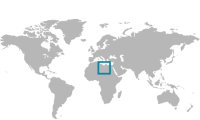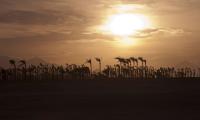Libya


In the post-Gadhafi era, Libya has been characterised by governments with limited capacity to impose authority. Instead of having a centralised monopoly of power, the country has been ruled by a plethora of militias with different and sometimes shifting allegiances. Thus, torture, political abductions and killings, and illegal detentions take place and the lack of security permeates all levels of society.
Our programme
Our objective in Libya is to support the establishment of a well-functioning national human rights system where key state human rights actors have capacity to exercise their mandate and work in complementarity for a better protection of the rights of individuals. We strive to achieve this through the support of the Constitution Drafting Assembly in its ongoing work with writing a new constitution for Libya, while also supporting rule of law and human rights actors within the country.
Partners
- The National Council of Civil Liberties and Human Rights
- The Merit Network for Democracy and the Rule of Law
- The Constitution Drafting Assembly
Brief facts
Geography: North African country neighbouring Tunisia and Algeria to the West, Niger, Chad and Sudan to the South, and Egypt to the East. It has 1,770 kilometres coastline bordering the Mediterranean – the longest of any African country.
Demography: 5.7 million inhabitants.
Economy: GDP per capita in Libya is 14,154 (PPP) USD
(2015).
Official language: Arabic.
Political: According to the Constitutional Declaration of Libya, the country is supposed to be a parliamentary republic. However, there is currently no single institution having full authority in the country. Libya gained independence from Allied occupation in 1951.
Sources: World Bank, CIA
